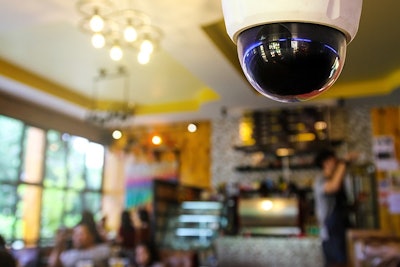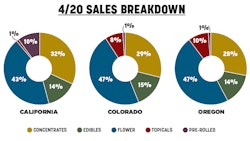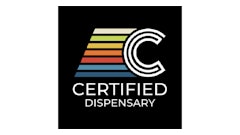
Cannabis dispensaries can face several security concerns while securing their employees, products and money against both internal and external threats.
Here, Jeff Corrall, head of strategic partnerships for March Networks, a provider of IP video solutions for the banking, retail and cannabis industries, outlines his top tips for dispensary owners looking to mitigate security risks in their facility, from buying and installing the correct equipment to tracking products and transactions.
1. Identify the risks.
A cannabis dispensary’s top security threat is shrink, Corrall says. Business owners must minimize employees’ ability to funnel cash out of the facility through methods like voided transactions and providing unauthorized discounts.
“Those are the things we see quite regularly on the retail side,” Corrall says.
2. Invest in a reliable video surveillance system.
A video surveillance system is essential for cannabis businesses, and sometimes required by law, Corrall says, and it is important to choose a reliable system.
“When something goes wrong, you want the video to be there,” he says. “If you don’t buy a reasonably designed surveillance system, then it’s not going to be there when you need it.
“Historically in video surveillance, a lot of people put their recorder in place, they put their cameras up, and then they wait for something bad to happen,” Corrall continues. “And when they go to find video, it’s not there because the system was down, or a camera wasn’t working. We have a solution that’s actively checking the health status of the system and then reporting to the customer when something’s wrong, so they can correct it.”
Business owners should constantly evaluate their video surveillance systems to ensure they keep up with the business’s needs, he adds. “Especially with people in a cultivation or dispensary that has been established and [they] have bought a system a couple years ago, they just threw a video system in and later found that it was either unreliable or it didn’t have the features that they would be looking for, like remote access.”
3. Select the right security camera for your business.
When choosing a camera for the facility’s video surveillance system, cultivators should select one that is both cost-effective and right for the business, and storage can be a big factor, Corrall says.
Some state laws mandate that cannabis businesses retain between 45 and 90 days of high-quality video that has a high frame rate, generally requiring 720p resolution and 15 frames per second, he says. Video of this quality can quickly consume the system’s storage space, usually requiring high bandwidth and large storage capacity, so selecting efficient cameras that use a low amount of bandwidth to acquire video is key, Corrall says.
“If you select the right camera that’s lower bandwidth consumption, you can reduce your storage by up to 75 percent, which is probably the biggest cost of a video surveillance installation,” Corrall says.
4. Implement video surveillance in your delivery trucks.
Once the facility has a reliable video surveillance system and the proper cameras in place, it may be wise to extend video surveillance to delivery trucks in vertically integrated operations or dispensaries that offer delivery services, Corrall says. This way, as the product goes through the seed-to-sale process, from the cultivation facility to the dispensary, it is tracked with video to ensure it is securely transported from one location to another.
5. Track RFID-tagged products in your dispensary.
March Networks originally got involved in the cannabis space by partnering with Zebra Technologies on an RFID solution that allows retailers to track RFID-tagged product in their stores, Corrall says. Control points are set up in specific areas of the facility, such as the front entrance, and when an RFID-tagged product passes through the control point, it is logged in the system and becomes searchable, he says.
By implementing this kind of system to track RFID-tagged products, dispensary owners can more easily find products if they go missing.
“Basically, if … a loss prevention person finds that a TV’s gone missing, for example, you can enter that TV’s serial number in our software, and we’ll bring up a list of every time that product has been seen by our video surveillance system, and then you can pull up that video and see what happened to the product the last time it was seen,” Corrall says. “You can see who walked through the door with it, and you have a pretty clear idea of what happened to that product.”
6. Integrate transaction tracking into your POS system.
In some states, such as Colorado, products no longer need to be tracked per state law when they reach the dispensary—retailers can remove the RFID tag and replace it with a barcode, Corrall says. However, systems like the one provided by March Networks allow POS integration with RFID tags, so whenever a product is sold, the transaction information is stored and searchable, he says.
“You can go through and look at when a specific product sold and get immediate access to the video and see what’s going on,” Corrall says. “More important than that, you can search for the things that look like fraud, … like a voided transaction, which could indicate that money has been accepted and product has been provided, but the money’s been put in the employee’s pocket [instead].”
Transaction tracking can also help identify if an employee has been providing excessive employee discounts to friends and family, which can also eat away at profits, he adds.
7.Ensure proper equipment installation.
The surveillance industry is largely conducted through an integration partner network, Corrall says, and companies like March Networks have integration partners that are certified to install a particular manufacturer’s products. Ensuring proper installation through these certified partners is essential when setting up security equipment, he says.
“They resell and install the product, and that’s really important,” Corrall says. “A DIY-type surveillance solution that you’d put in your home for your dispensary is probably not the right way to go. You definitely want to find an integration partner that specializes in video surveillance that is certified by whatever manufacturer they’re installing.”
Top Image: © titikul_b | Adobe Stock


























